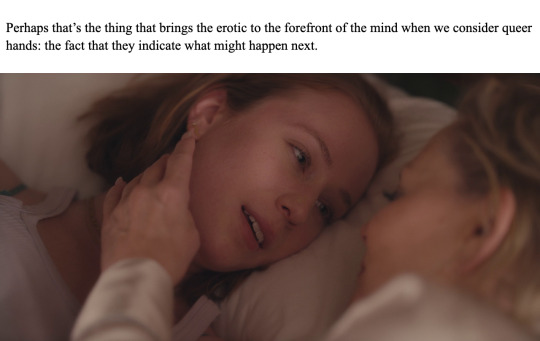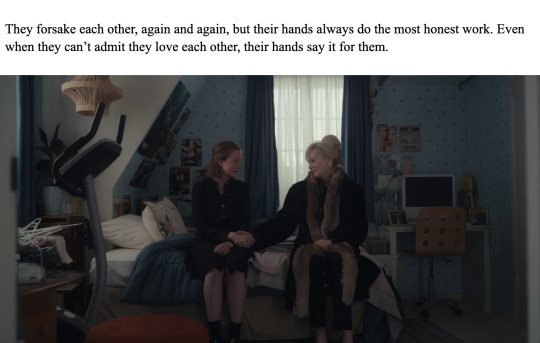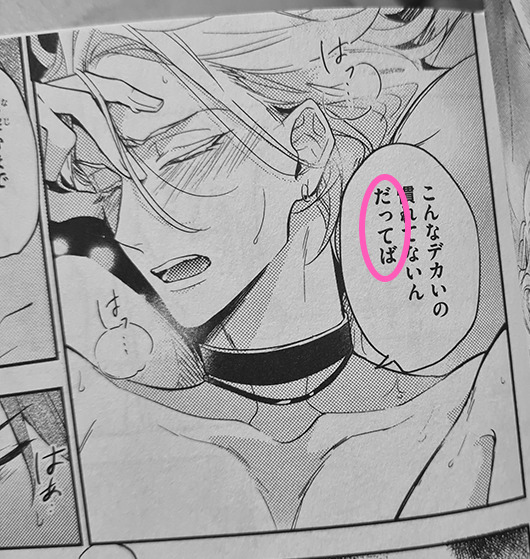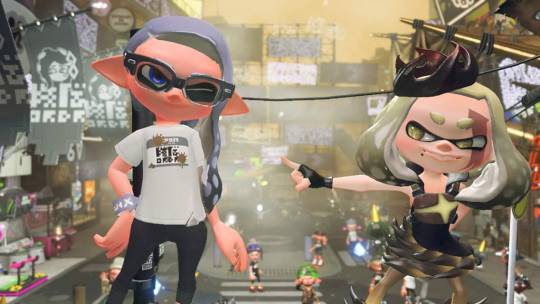#just consider me appropriating the article for all queer women
Photo








1, 3, 6: “Freaky Hands: A Phenomenological Reflection on Lesbian Hands” by Wednesday
2, 4, 5, 7, 8: “The Queer Erotics of Handholding in Literature: Physical Touch in the Novels of Patricia Highsmith and Sarah Waters” by Kristen Arnett
#hacks hbo#hbo hacks#deborah vance#ava daniels#jean smart#hannah einbinder#i'm uhhh gonna see myself out now#also please no one accuse me of bi erasure i know that ava's bi#just consider me appropriating the article for all queer women
1K notes
·
View notes
Note
Hi there dear~, I know this is kind of an out the blue question, but... I’ve been wondering about it for a bit, and felt you might be the best person I know of to ask /)w(\
I’ve been curious-- do you know if there's a name for the sort of speech pattern that Minato uses? Since I haven't got much knowledge about Japanese myself, I'm unsure if that's even exactly the right term to use, but... it seems right? so we'll go with it lol
I know a portion of things is also just his vocabulary differing from other characters as well, but still, I wasn't sure if his usual way of speaking would also count as a different pattern in general or not-- and even if this isn't something you've got much of an answer on yourself, thanks so much for taking the time to reply to this, and for all the updates and such you post for everyone~💕
HI LOVELY HUMAN! ❤️💛💜
Oh my gosh, first of all, thank you for waiting so long for this super late response! ;A;
Hmm, honestly, I'm not 100% sure about this since Minato's word choices and grammar usage are a mix of masculine and feminine language (leaning more towards feminine though).
However, Tofugu has this amazing article on gendered language: Beyond the Binary: A Queer Take on Gendered Japanese
They mention Onee kotoba [オネエ言葉] which they define as:
オネエ言葉 is a stereotypical gendered speech style, similarly to 女言葉 and 男言葉. While it is associated with the queer community, it goes without saying that it is not "the way gay people talk." Rather, just like 女言葉 or 男言葉, it's a speech style that people of all different gender identities can use in their own speech.
The name of this speech style comes from a queer identity term, オネエ, which is short for お姉さん (older sister). オネエ is used to refer to people who speak オネエ言葉, or act in a flamboyant manner. Just as a quick disclaimer: オネエ is considered derogatory by some, so we recommend using appropriate caution with this word. Still, it is quite commonly used in the media, as well as in friendly banter between members of the queer community, much like English-speaking gay men might call each other "girl."
Another definition for Onee Kotoba is from Weblio (one of my favourite dictionaries, haha).
Their definition is:
女性であることを強調した、誇張された女性語。「わ」「よ」「なの」などをよく用いるといった特徴がある。オネエ言葉を使う人を「オネエキャラ」などと言うこともある。
"Exaggerated feminine language that emphasises being a woman. The use of (sentence enders such as) wa, yo, and nano (among others) is a typical trait of this language. Those who use onee kotoba are also referred to as 'onee kyara' (i.e. celebrities or personalities, usually male, taking on an effeminate role -- JapanDict)."
So after reading a few articles and rereading TG, I'd say Minato uses this language to a degree. He still definitely uses masculine pronouns and some sentences sounds more masculine, grammatically, but he definitely mixes his use of gendered language.





Picture (1): アンタ (anta->from anata). I find this usage is used more by women, esp. when women address their husbands/lovers. Tofugu also has a longer explanation for anata (linked below). だよ (dayo) is supposedly neutral, but I find it is generally leaning towards being more masculine. I've personally never heard my female Japanese coworkers use 'dayo' -- they'd say ですよ (desu yo), but I guess that's probably because we were in an office setting!
Picture (2): use of pronoun 俺
Picture (3): だってば is a grammar point that seems to be used more by women.
Pictures (4) & (5): Some feminine sentence enders that Minato uses. For picture 5, that's attributed to the lack of だ in the sentence.
Plus, OnoYuuki's portrayal as Minato in the CDs... he really makes Minato sound masculine in some scenes, and more feminine in others!
Again, thank you for waiting so long for me to respond! I hope this helps! 🥰💜
(And you are most welcome! I am glad you are also enjoying the takeaways~ 💜)
- Amaya-chwan
P.S. If anyone has more information on gendered language in Japanese or has any corrections for me about anything on this post, please let me know! I'd love to learn a lot more about this topic! 🥰
------
Some other websites I stumbled across when looking into this topic!
https://japanese.stackexchange.com/questions/24139/can-girls-use-%E3%81%A0%E3%82%88%E3%81%AD
https://jlptsensei.com/learn-japanese-grammar/%E3%81%A3%E3%81%A6%E3%81%B0-%E3%81%A3%E3%81%9F%E3%82%89-tteba-ttara-meaning/
https://www.reddit.com/r/LearnJapanese/comments/3ian4b/gendered_language/
https://www.reddit.com/r/LearnJapanese/comments/1tp2al/masculine_and_feminine_language_question/
https://www.reddit.com/r/LearnJapanese/comments/2b9fiz/anyway_to_check_for_language_femininity/
https://www.tofugu.com/japanese/anata/
25 notes
·
View notes
Text
5 reasons why you probably shouldn't say 'womxn'
“1. I say so. Not because I'm special or anything, but this word claims to cater to me and include me and I just don't vibe with that nonsense. I'm not a woman and I'm not a woman with one character substituted out. So if you're going down to reason 2, you're telling me I hear you and I know better than you how to include you, in which case, here's some more reasons:
2. It has its origins in trans-exclusionary feminism. Womxn is understood to have been coined in response to "womyn," a solid TERF construction which was to signify that they hated men - and trans women - so much so that they didn't want "men" to be a substring of the word denoting them. Womxn is supposed to fix this - I'm not sure how or why. The word does not have any coherent transfeminist history that I can see, and I have been searching for a while. If you can find an authoritative source for the origin of 'womxn' that contradicts this, please contact me. Mark Peters in The Boston Globe writes that ““Womxn” is one of a few similar lexical and social phenomena, including the adoption of “x” in naming LGBTQ and non-gender-binary people.” I think that’s shoddy. Unlike ‘womyn’ which has a coherent traceable history, going back to Wolf Creek Womyn’s festival, womxn has no such known origin point. Some trace it to the 70s without ever demonstrating this trace - please @ me politely or otherwise if you find that I haven’t done my research and there is a coherent source and etymology for womxn. If you construct a term where the founding logic is "let's take out all traces of 'man' from this word so as to exclude trans women who we believe really are men," then in my book it doesn't get subverted by changing its spelling. The purpose of modifying the word "woman" was trans-exclusionary in the case of 'womyn' and I fail to see how it ceases to be trans-exclusionary for 'womxn.'
3. There cannot be one term including everything 'womxn' claims to include and excluding everything it claims to exclude. I posit that any sentence that demands its usage is carelessly composed. Womxn is intended to lump together cis women, trans men, nonbinary folks, and exclude cisgender drag queens, cis men, and other AMAB castaways of the queer community. As far as I can see, the criterion for being a womxn, far from being the all-encompassing all-progressive umbrella, turns out to be far too reliant on gender assigned at birth. That's shady as hell. I personally don't know any trans man that wants to be called a womxn; and I abhor the term, of course. I think really it just reeks of cis-feminism trying to reduce all gendered violence to a conception of sexism where only cis men can be perpetrators and cis women are the highest hierarchy of victim to the extent that the word "woman" forms the root of this word to represent all marginalised gender identities. As a nonbinary person I reject the cis-centeredness of this term, and I also reject my inclusion within it.
4. It is a prime symptom of the NGO-industrial complex trying to worm its way into progressive communities by appropriating the language while not adopting any principles of social justice. Every woke organisation is probably sending out internal memos to search-replace instances of "women" with instances of "womxn." Womxn is considered to be the more 'woke' version of the term, used to signal a certain progressive credential. It is best to be cautious of such usage. As an approach to inclusion and liberation and progressiveness it is highly suspicious, one that involves reinventing language not for linguistic or community purposes but to cover up exclusion and to add clout value to sentences to make them look aesthetically revolutionary.
5. An umbrella term already exists to signify nonconformity to the assigned gender at birth, to denote many of those who are marginalised due to gender identity, expression, and experience differing from gender assigned at birth, and differentiating us from cis folks: transgender. Unlike 'womxn,' transgender denotes an umbrella of people with actual shared experiences and identities and communities. While ostensibly claiming to be inclusive, "womxn" is predicated on the cis gender binary and focuses inordinately assigned gender at birth.
Aside from that, reading the work of Anbu Esvi reminded me of how cis queer spaces had somehow made me feel like "transgender" is a dirty word, a word that's not enough, that I had to use "trans*" or other alternatives to replace an 'outdated' term, and how that is sheer folly.
They write -
"In my personal journey, I have now arrived at happiness with ‘transgender person’. I have arrived here after rejecting queer and only trans* that I used to earlier uphold, as part of my solidarity with some queer feminist spaces. I am happy with transgender asexual person because I have now spent some amount of time engaging with terminologies and their histories and political implications. Unlike queer (which was ‘reclaimed’/’subverted’ from a slur ... and still has little to no space for asexual expression), the origins of transgender terminologies are taken by the community ... however complicated its meanings and understanding of sex and gender differences."
and I find myself heartily agreeing. I have an exhilaration for "transgender" as a term to describe myself and an umbrella to identify under because of the power it holds. The history it holds. The amount of progress that has been achieved under its name. Sylvia Rivera and Marsha P Johnson aren't "womxn." They identified as drag queens, an identity that exists under the transgender umbrella. They are transgender. Say the word.
(Esvi's citations are in their article. My only citation is their article. Please read it: https://medium.com/@esvi.kot9/no-outlaws-in-the-gender-galaxy-a-trans-feminist-review-discussion-fda47fd478dc )
16 notes
·
View notes
Text
How Splatoon 2 Helped Me Understand My Queer-ness

With Splatoon 2 ending its schedule of updates with the final Splatfest (aka the Splatpocalypse) this weekend, I took some time to reflect on one of the things that makes this game so important to me, and perhaps some others like me.
Splatoon 2 will undoubtedly remain on my most important personal video game list for many years—possibly forever. My partner bought me a Switch for Christmas in 2017 and with it Mario Odyssey. Of course the first main-line Mario game would be the first game I would play on my new Nintendo console, and while Splatoon 2 probably wasn't even the second game I played on it (I would guess it was fourth or fifth?), in my mind it eclipses every other memory I have about my first few months with the Switch. It feels like my first Switch game, even though I know it wasn't.
While I enjoyed the Wii in its hay-day, I have a pretty small catalog of games for it, and like a lot of folks, I never bought—nor did I have any interest in—a WiiU. However, anticipating that the Switch would reignite my love for gaming (which it most definitely did), I signed up for the by-mail video game rental service GameFly. I knew I wanted to try a lot of Switch games, but I didn't want to shell out $60 too early in the system's life. That's how I first tried Splatoon 2.
I was a bit uncertain when I added it to my GameFly wish list, but again, I was hungry for any content the Switch was offering in its first year. I really don't like shooters and online multiplayer features are usually a second-thought to me. However, the art style and whimsical tone lured me in for a try. After getting my feet wet in the first couple of hours, I was hooked...puns definitely intended.
I had also just seriously begun grappling with my gender identity beginning in October/November of 2016, and by the end of 2017, I was well into my transition as a non-binary, transfeminine person. I should note that those are the terms I use to define my gender identity now in 2019. From the end of 2016 through a lot of 2017, I was actively repressing using the word “transgender” to describe myself; not that I harbored any type of transphobia, but rather that the idea of being anything but cisgender seemed like something I would never be able to “pull off..” I didn't hate the idea of being trans non-binary, I just didn't believe that I was “good enough” to call myself trans. There was a lot of soul-searching going on at that time as I experimented with pronouns, names, my wardrobe, and use of make-up that brought me to a much happier, more authentic place with my gender identity, but I would be remiss to not also acknowledge my obsession with Splatoon 2 at the same time.
Starting up the game for the first time, I was prompted to create my Inkling avatar character. Like always (as in even before I began my gender-identity journey), I chose a female character model, assuming that I would like the available costume and hair options more than a male character. Wanting her to look slightly queer, I chose the Inkling equivalent of the shaved-on-one-side, long-flowing-on-the-other haircut that is commonly associated with trans women and non-binary transfem people (including myself now). “She's so cute,” I thought, seeing in her a highly-stylized ideal of how I wished I looked; feminine, but with a slightly butch edge. “Futch” as many in the LGBTQ+ community call it.

As I played and absorbed myself into Splatoon 2s lore and aesthetic, Inkopolis, the epicenter of Inkling culture and life in the Splatoon franchise, quickly came to represent a type of gender-inclusive utopia to me. As I logged on religiously multiple times a day every day to see what new clothes and accessories I could buy to customize my Inkling doppelganger as well as taking note of how the other players were dressing both their male and female characters, I noticed that the game didn't make a distinction between “girls clothes” and “boys clothes.” All the same shirts, shoes, hats, glasses, everything was available to everyone.
And yet, I didn't feel like the Inklings were genderless. When you start Splatoon 2, your character begins in a basic t-shirt, a decidedly unisex, non-gendered article of clothing even in the human world. However, as my Inkling's wardrobe expanded, I found her just as cute (and found myself just as envious) in a ska band appropriate white dress-shirt and skinny black tie, a polka dot button up, and a New Wave French cinema-esque white shirt with thin horizontal black stripes. She could wear clunky black combat boots ala Daria Morgandorfer, brown penny-loafers, and neon green Chuck Taylor-inspired hi-top sneakers. However, I never felt like any of these or the literally hundreds of other clothing and accessory options in her virtual wardrobe invalidated her gender. There were some items I liked more than others, of course, but she was always that cute, spunky, confident futch girl that I had longed to be for years.
There's a common misconception, particularly among cishet people, that transfolk want to do away with gender entirely, that we imagine a gender-neutral world were there are no men or women, but of course that isn't true. What we DO want is a world were the gender-binary, where everyone is either 100% a man or 100% a woman, isn't the expectation. To me, that's one of the things that the world of Splatoon 2 represents. It isn't a gender-absent world, it's a gender-inclusive world.

It may sound silly, but dressing up my Inkling and seeing her in this world played a huge part in helping me overcome the expectation (and admittedly some internalized trans misogyny) that if I didn't want to look like/be a cis man, I had to “look like a cis woman.” I put that phrase in quotes because of course it's a very loaded phrase that suggests all cis women have to adhere to a strict gender-binary and wear dresses and makeup 24/7 to be considered women, hence the misogyny. Just like my funky little head-canon queer Inkling avatar, I feel more comfortable knowing that I can wear whatever I want, even “mens” clothes, without being a man.
#me#personal#splatoon#splatoon 2#splatfest#splatocalypse#transgender#trans#genderfluid#genderqueer#transfeminine#nonbinary#nb#enby#nintendo#video games#trans non binary#enby positivity#enby pride#genderflux#nb positivity#trans nonbinary#queer#nintendo switch#marina and pearl#pearl and marina#marina#pearl
502 notes
·
View notes